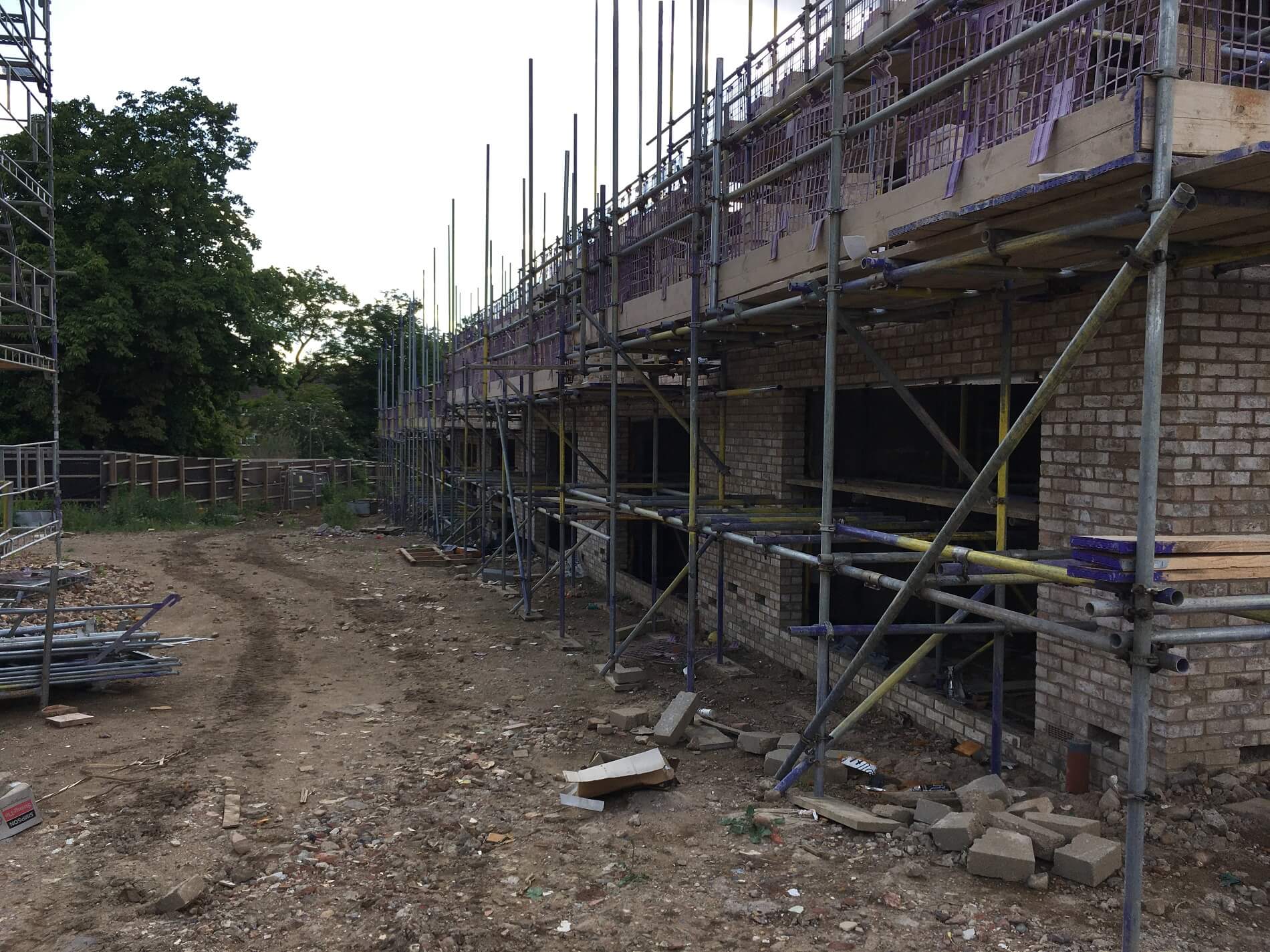Safety is paramount when building scaffolding hence the need to consider scaffold lift heights. If the scaffold is being erected where the public is at a risk of facing any hazards, all the necessary safety precautionary measures should be adhered to. The scaffold lift height should provide adequate headroom for anyone walking under.
The standard scaffold lift height is 2 metres for walk-through scaffolds and between 1.35 to 1.5 metres for brickwork.

If the scaffolding structure has been constructed on a public pavement, there should be a pavement lift to allow the general public to walk through. This is achieved by ensuring there’s sufficient headroom and removing the ledger bracing under the first lift. The scaffold structure stability is ensured by using plan braces or additional ties.
Maximum Lift height
The maximum scaffold lift height is 2.7 metres. A close-boarded covering should be provided to protect anyone walking under the first lift of the scaffold structure from any falling debris and materials.
Based on the risk assessment or local authority requirement, pavement gantries would be necessary to provide ideal protection from falling debris. For such the minimum headroom should be 2.44 metres and a 1.2m width to accommodate persons with disabilities.

Maximum lift height for brickwork
The scaffold lift height for brickwork is between 1.35 metres and 1.5 metres. To avoid the risk of materials falling below, full boarding each lift is a viable solution to consider. You can also consider having crash decks and scaffold fans in the early stages of erecting the scaffold structures.
Apart from the different height restrictions, it’s always advisable to consult the local authorities in your area because they all have various requirements. For instance, depending on how close the scaffold structure is to the highway, a temporary pavement street closure license might be necessary before commencing any scaffolding work.